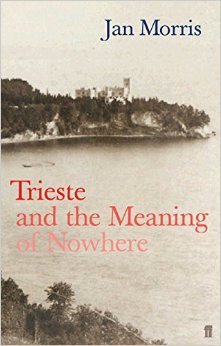What do you think?
Rate this book


194 pages, Paperback
First published September 1, 2001



My position toward this book is privileged, since I was born and raised in Trieste, and even though I haven't been living there for some time it's still my dearest town, the one I know better.
As a consequence, places, people, views, feelings I know so well kicked in, in my memory, in such a powerful way that sometimes I felt like I was losing the point of view of the author. But maybe that's what makes the author so remarkable, because this has never happened to me before when reading about Trieste - she really managed to get into the very heart of this city, and report the very feelings it arises. I was particularly impressed by the fact that she perceived what in my opinion are two of the main ghosts that haunt me as a Triestina: hypochondria and in particular the sense of wanting something without knowing what, expecting something, wondering about oneself and the meaning of one's own life.
I'm still wondering about the peculiar concept of nowhereness, that makes the title of the book, and that the author attributes to Trieste. I would like it to be true. And in part it is. I have the impression, though, that the author has somewhat idealized Trieste in this respect, in a way that's typical of visitors that don't actually live there for an extended, continuous time, dealing with the "everyday side" of a place. But maybe she just decided to leave that part out ... who cares after all? At the very end she admits to have portrayed nothing but herself, her Trieste. That's authentic enough.
I highly recommend this book.
There are people everywhere who form a Fourth World, or a diaspora o their own. They are the lordly ones! The come in all colours. They can be Christian or Hindus or Muslims or Jews or pagans or atheists. They can be young or old, men or women, soldiers or pacifists, rich or poor. They may be patriots, but they are never chauvinists. They share with each other, across all the nations, common values of humour and understanding. When you are among them you know you will not be mocked or resented, because they will not care about your race, your faith, your sex or your nationality, and they suffer fools if not gladly, at least sympathetically. They laugh easily. They are easily grateful. They are never mean. They are not inhibited by fashion, public opinion or political correctness. They are exiles in their own communities, because they are always in a minority, but they form a mighty nation, if they only knew it. It is the nation of nowhere, and I have come to think that its natural capital is Trieste.
The Trieste effect, I call it. It is as though I have been taken, for a brief sententious glimpse, out of time to nowhere.
I am not the first to associate the city with nowhereness. The Viennese playwright Hermann Bahr, arriving there in 1909, said he felt as though he was suspended in unreality, as if he were 'nowhere at all'. Trieste is a highly subjective sort of place, and often inspires such fancies. People who have never been there generally don't know where it is. Visitors tend to leave it puzzled, and when they get home, remember it with a vague sense of mystery, something they can't put a finger on. Those who know it better often seem to see it figuratively, not just as a city but as an idea of a city, and it appears to have a particular influence upon those of us with a weakness for allegory – that is to say, as the Austrian Robert Musil once put it, those of us who suppose everything to mean more than it has any honest claim to mean.